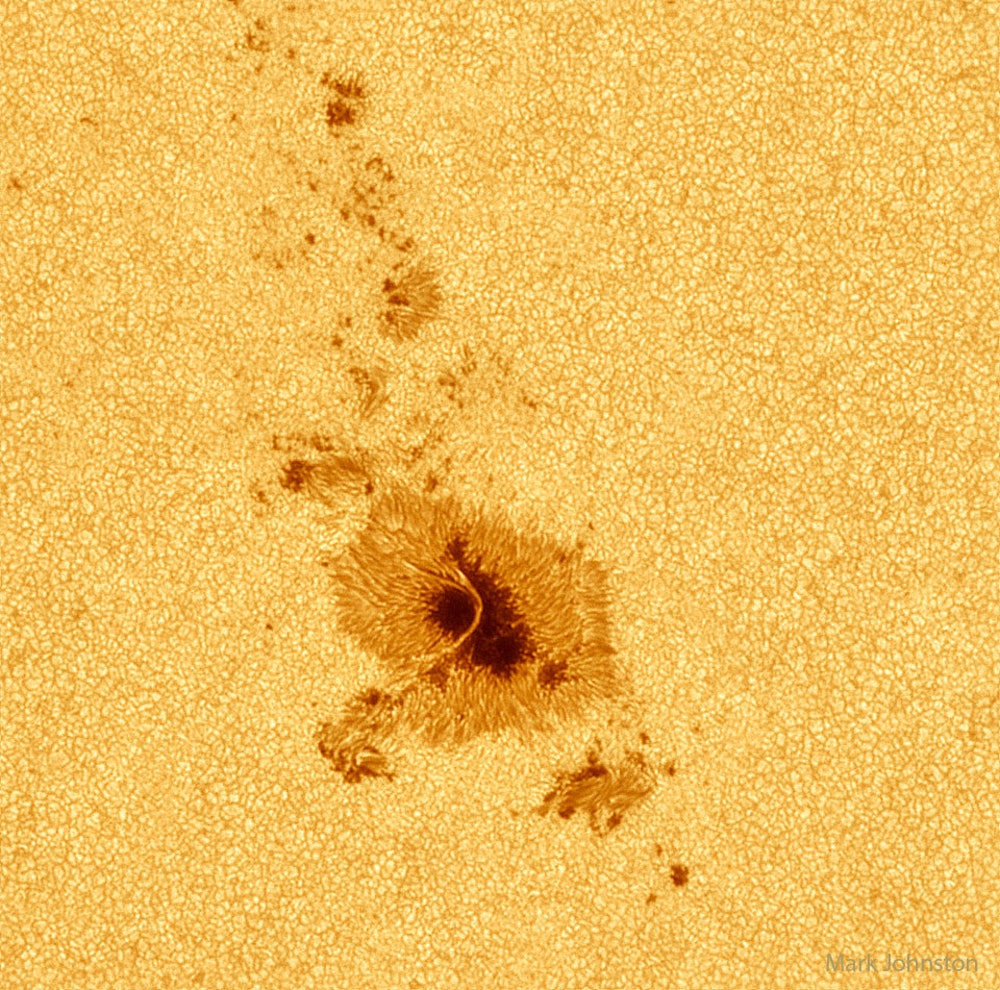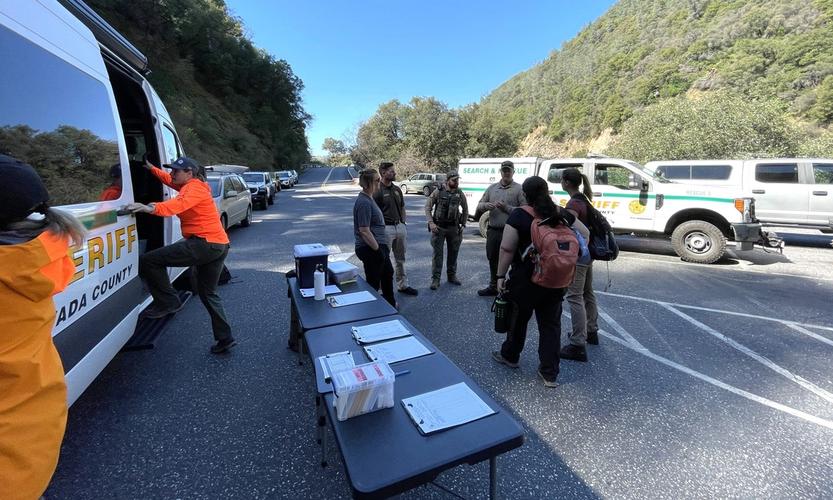Why would a small part of the Sun appear slightly dark? In the graphic to the right, a close-up picture of the sun, we see a sunspot, that is, a depression on the Sun's surface that is slightly cooler and less bright than the rest of the Sun. The
Sun's complex magnetic field creates these cool regions by inhibiting hot material from entering the spots. Sunspots can be larger than the Earth and typically last for about a week. Part of active region AR 3297 crossing the Sun in early May, the
large lower sunspot is spanned by an impressive light bridge of hot and suspended solar gas. This high-resolution picture also shows clearly that the Sun's surface is a bubbling carpet of separate cells of hot gas. These cells are known as granules.
A solar granule is about 1000 kilometers across and lasts for only about 15 minutes. The intense magnetic fields associated with sunspots often tangle, cross and reorganize and produce solar flares and electromagnetic pulses (coronal mass ejections) containing huge bubbles of radiation and particles from the sun. These pulses are capable
of producing auroras with the earth's ionosphere and can also impair the transmission of electricity through our power grids and the quality of radio communication systems on earth.Sunspots
 Source: apod.nasa.gov; image credit and copy right Mark Johnson
Source: apod.nasa.gov; image credit and copy right Mark Johnson
Featured Articles

Human Remains Found Near South Yuba Bridge in March Identified →
December 17, 2025
Authorities identify remains found in March as Aaran Sloan Taylor, seeking next of kin.
Transfer Station Burn Suspended After Community Concerns →
December 16, 2025
Sierra Hardware Plans Extensive Repairs After Flood Damage →
December 8, 2025
Sheriff’s Office Accepts $60,000 Grant for New Search and Rescue Team →
December 2, 2025
Confusion Surrounds Release of the Plumas County Grand Jury’s Report →
December 4, 2025